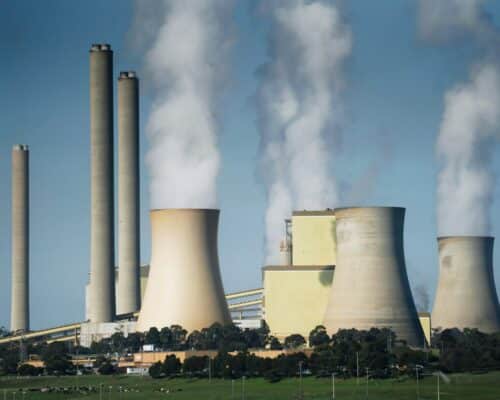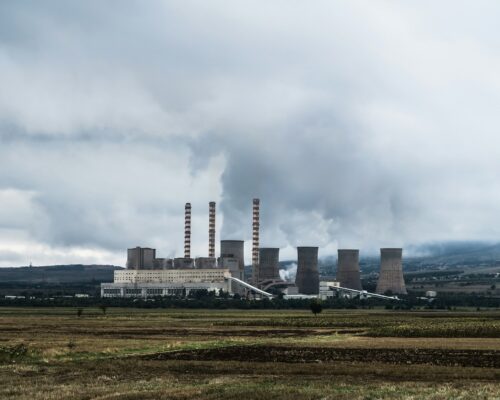Coal Phase-out Accelerates Globally Except in China: ‘Boom and Bust’ 2023
19 April 2023 – by Viktor Tachev Comments (0)
While the world is actively working to phase out coal, China continues to launch and plan for new capacity. As a result, the country risks offsetting its remarkable renewable energy progress, further increasing its greenhouse gas emissions intensity and burdening itself with a fleet of stranded assets, with the majority already operating at a loss.
Where the World Stands on the Coal Phase-out in 2023
In 2022, the Russia-Ukraine war and the following energy market disruptions pushed some countries back towards coal usage. Over the year, 45.5 GW of global coal electricity generation went online, and a further 26 GW was retired, resulting in a net increase of 19.5 GW, compared to 12.6 GW in 2021.
Despite this, the Boom and Bust 2023 report notes that coal’s phase-out remains in sight. Currently, around 25% – or 580 GW – of the global coal fleet has a phase-out date. Much of the remaining 1,400 GW of coal-fired power generation is subject to some form of carbon-neutrality target.
Meanwhile, just 5% of the global coal fleet, nowadays, remains beyond the scope of a national phase-out commitment.
Paris Agreement
However, the pace of the global coal phase-out efforts lags behind the Paris Agreement’s targets. The report’s authors estimate that to succeed, a 2040 phase-out would require four-and-a-half times the capacity retired in 2022.
The Global Coal Phase-Out Is Speeding Up
In March 2023, UN Secretary-General António Guterres called for an immediate end of new coal capacity and a phase-out of existing capacity by 2030 in developed countries and 2040 in developing countries.
Around 70% of the OECD operating coal capacity is on pace for a phase-out by 2030 or 2040.
In 2022, the EU decommissioned 2.2 GW, compared to the record 14.6 GW in the previous year.
The US led the world with 13.5 GW of phased-out coal capacity.
The EU and North America don’t have plans for new coal-fired power plants. G7 countries, accounting for 15% of the global capacity, had just one proposal for a new power plant in Japan. The group issued a pledge to phase out unabated coal by 2035. As a result, each member would have to implement a 2030 coal phase-out policy.
In 2022, the scale of global proposed new coal capacity (excluding China) was 84% lower than in 2015. The decrease in OECD/EU nations and non-OECD countries was 90% and 83%, respectively.
Over the past year, 99 financial institutions adopted or improved their coal phase-out policies. While the majority of the policies remain insufficient in their alignment with climate science or in their ability to halt support for coal plants developers or end coal-related finance, the movement is a step in the right direction.
Furthermore, the report’s authors note that in 2021 and 2022, the international financial support for the coal-to-clean transition topped USD 45.2 billion. The majority went to Indonesia, Vietnam and South Africa.
Overall, countries and institutions worldwide are actively working to decommission existing coal-fired generation and not build any new coal power plants. However, there is a single notable exception to this trend.
China Becomes a Coal Power Stronghold
In 2022, the scale of planned coal capacity declined or plateaued in every region except Central Asia and China. The world’s biggest emitter approved its largest expansion of coal-fired power plants since 2015.
While the rest of the world slashed new coal-fired capacity by 20% on average, China increased it by 38%. The country was responsible for 59% of newly commissioned global coal power capacity. That will not help in combating global warming. Next in line was the South Asia region, consisting of India, Pakistan and Bangladesh, with 16%. Southeast Asia, including Vietnam, the Philippines, Indonesia and Cambodia, followed with 11%. And then Japan and South Korea trailed the rest with 9%.
Furthermore, China’s 26.8 GW of added capacity in 2022 offset coal plant retirements in the rest of the world, which added up to 23.9 GW.
In total, the global new coal power capacity under development increased by 12% year over year from the record low of 479.4 GW in 2021 to 537.1 GW in 2022.
In 2022, China’s share in new coal capacity under development jumped to 68%, up from 55% in 2021. According to E3G, as of March 2023, the country is responsible for 72% of the global pre-construction capacity, compared to 66% in July 2022.
The authors of the Boom and Bust report note that despite slowing down, China’s financial support for overseas coal capacity continues.
Currently, only 6% of the coal capacity in non-OECD countries like China is in line with a phase-out by 2030 and 2040 in developed and developing nations, respectively. The rest do not have a closure date before 2040.
Coal Phase-out Essential For Fighting Climate Change
It’s evident that coal phase-out is of the highest priority if the world is to secure a liveable future. In light of this, China’s actions bear the most significant importance. The Boom and Bust report notes that the country can still cancel 58 GW of coal power projects that remain in limbo or convert them into renewable energy capacity.
Doing so would unlock various benefits. First, it would avoid unnecessary costs since half of China’s operating coal fleet in 2022 made losses, according to TransitionZero. Next, it would help the company avoid excessive stranded asset risk. And most importantly, it would save a massive 265 million tonnes of CO2 annually – an amount similar to Thailand’s 2021 emissions.
Whether it is to build renewable energy capacity at unprecedented rates or expand fossil fuel infrastructure, China has proven that it can go to great lengths and top the global charts. Whatever its next step is, it has the ability to decide the future of humanity.
by Viktor Tachev
Viktor has years of experience in financial markets and energy finance, working as a marketing consultant and content creator for leading institutions, NGOs, and tech startups. He is a regular contributor to knowledge hubs and magazines, tackling the latest trends in sustainability and green energy.
Read more


